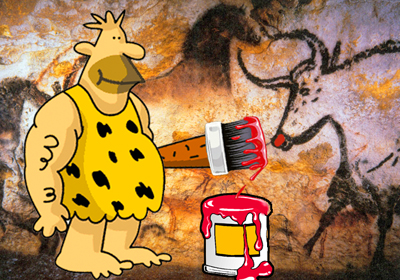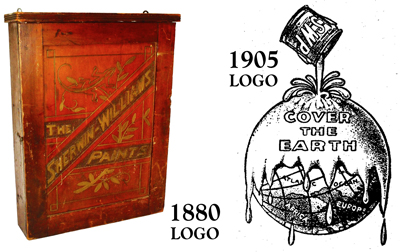by Frank Campanelli – frank.campanelli@gmail.com
Today we all take choices of colors and brands of house paint for granted. You can visit your local paint store and browse countless shades and hues of every virtually every color in the rainbow. Just bring in a swash of fabric or any colored sample and it can be scanned to produce an amazingly close match of the color in minutes. Things were not always full of so many choices when it comes to house painting, interior painting or exterior painting. Let’s take a trip back in history and see exactly how far back painting of living areas can be traced.


Generally speaking the artisans and craftsmen were the ones that were commissioned to do the painting throughout history. The house painting profession was evident as early as the 1200’s and many suspect that painters as a trade may even go back farther in time. But since Gutenberg did not invent the printing press until 1440 there is not much written history that scribes recorded in the first century regarding the house painters that may have existed.
In the fourteenth century house painters in England organized themselves in guilds. That was what really established house painting as a respected profession that held to certain standards of practice. They organized themselves into two groups, the “Painter’s Company” and the Stainer’s Company”. Several hundred years later the two merged into what was called the “Worshipful Company of Painters and Stainers”. Their paint mixing and application skills were actually regarded as closely held secrets to outsiders in order to protect their way of making a living.

The demand for interior painting continued despite the puritan objections. Oil and water became the base that would be mixed with a wide variety of materials including lead, ground shells, iron or copper oxide, coffee, rice, eggs, fruits, berries and other vegetation to create many types and colors of paint. Paint producers cooked up their product despite the fact that it was illegal. Many homes were elaborately decorated with lifelike murals of sky, stone and landscape features painted on the walls, paneling, cornices and ceilings. The painting tools used during these times are very similar to todays brushes employing wooden handles with various types of hair attached. Modern brushes use synthetic fibers but the object was the same, to apply the paint to the surface with the appropriate thickness and stroke in order to ease the process and achieve the best finished result. Many of the paints were quite thick and not at all like the easy to apply paint that we are accustomed to.
In 1718 Marshall Smith invented a “Machine for the Grinding of Colours” which sparked a race of innovation to create the best ways to grind pigment materials effectively and actually start manufacturing paint in a paint mill. By the mid 1800’s linseed oil began to be used as a less expensive binding agent that actually protected wood that was painted.

So enjoy the choices you have today and make the most of your home with paints that can add life to your exterior house painting and enhance the mood of your interior house painting. The sky is the limit today when it comes to imagining the possibilities that are available and creating just the look that you desire.

Frank Campanelli, the esteemed founder of Franklin Painting LLC, has been leading the company since 1986. He takes immense pride in the stellar reputation his dedicated team has built by consistently delivering top-notch service to each customer.

